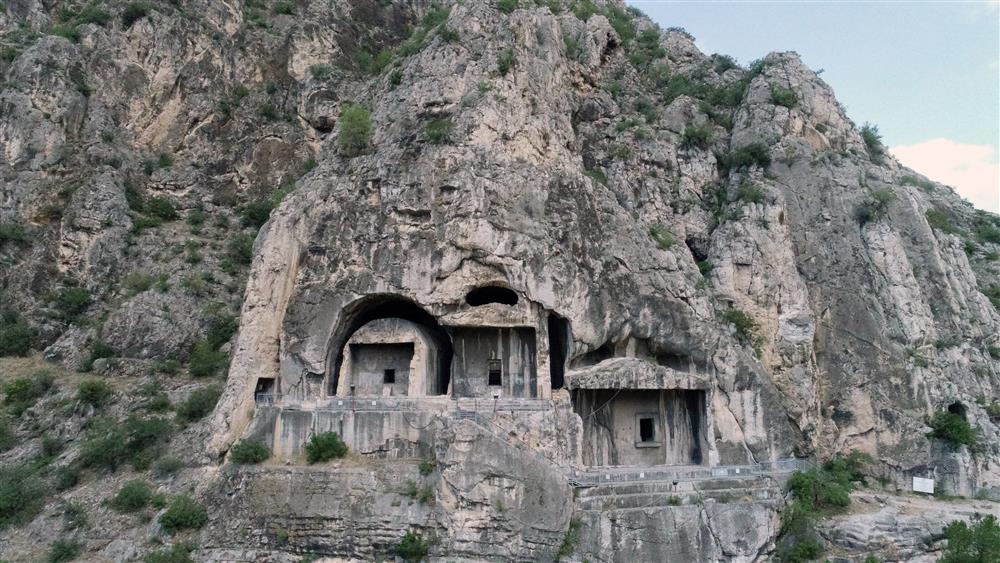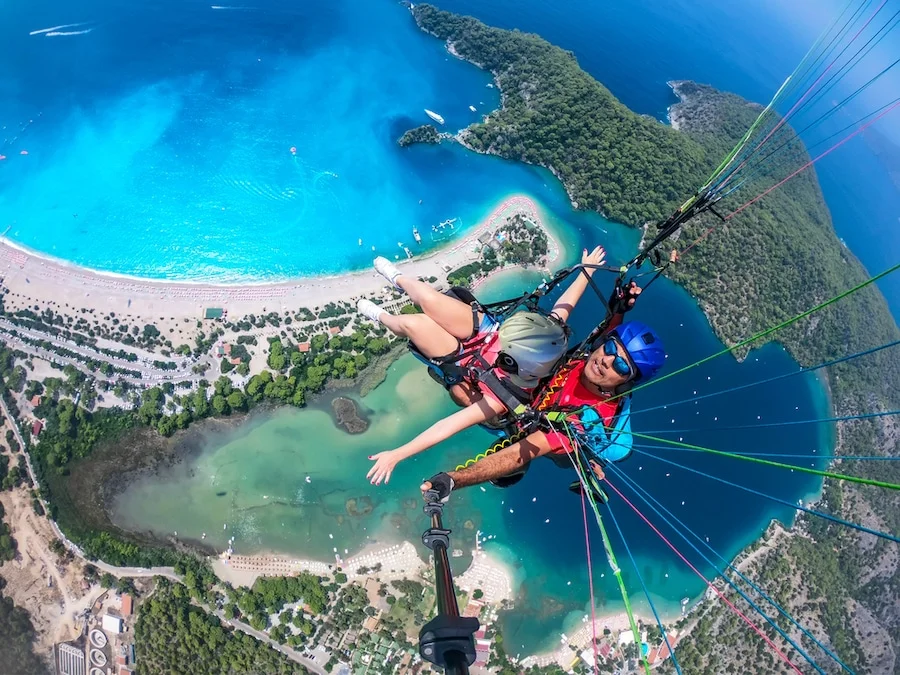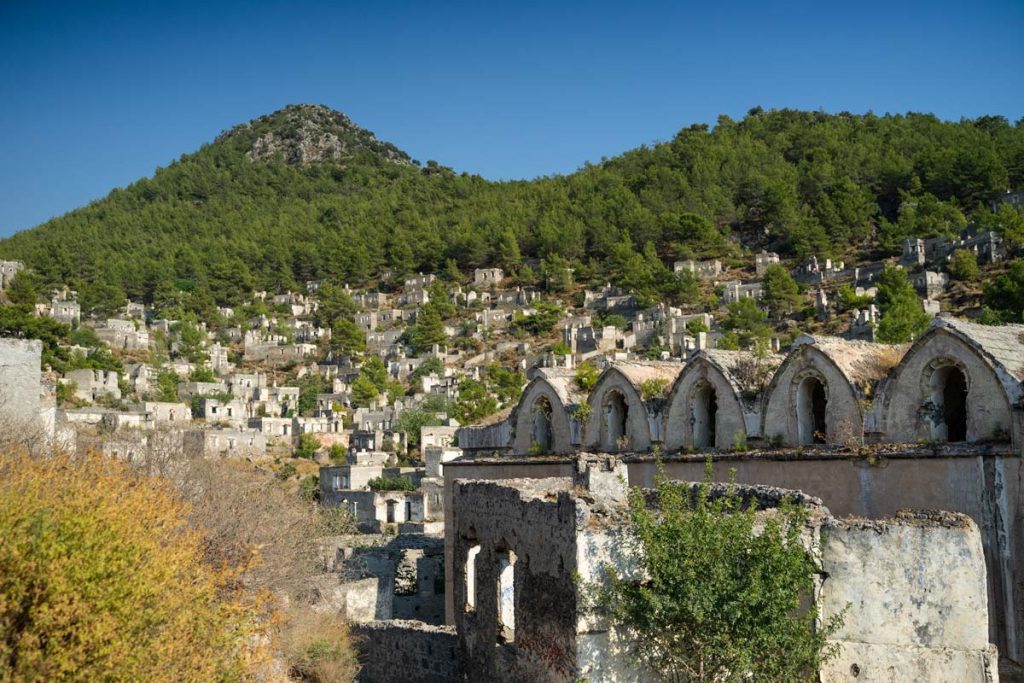Ready for the ultimate Dalaman travel tips? This slice of Turkey’s Turquoise Coast is about to show you why it’s one of the most beautiful spots for a holiday. Beyond the obvious appeal of pristine beaches and crystal-clear waters, the Dalaman area is a treasure trove of activities.
We’re talking ancient ruins exploration, adrenaline-pumping jeep safaris, and tranquil boat trips along the Aegean Islands. Dive into this region for a mix of adventure, culture, and relaxation that makes Dalaman area holidays unforgettable.
When you think of Türkiye holidays in the summer, you’ll no doubt start thinking about boat trips and beaches in Turkey. And why not? These are the perfect ways to spend your sun-drenched days!
The Dalaman Region is one of the most popular spots to head to during the summer months, and this region encompasses some fantastic resorts, including Marmaris, Icmeler, Dalyan, Ölüdeniz, and Fethiye.
But where should you head if you fancy a day away from the beach when you visit Dalaman?
Top Things To Do In Dalaman Area (Beyond The Blue Lagoon)

The good news is that although the Dalaman Region is packed with simply divine beaches to visit (Blue Lagoon in Ölüdeniz, anyone?), there are many other things to do.
Here are a few things you should put on your to-do list.
Dalyan Mud Baths

We’ve long been told about the health benefits of mud, and if you fancy rolling around in some, giving your skin a supernatural treatment, you’re in luck. Dalyan mud baths are extremely popular, and you can easily combine your trip with a trip down the Dalyan River (more on that shortly).
Just a tip – make sure you wear swim shorts or a swimsuit/bikini that you’re not too bothered about. You wash the mud off, but it stains!
Take A Jeep Safari

For the adventurers at heart, a jeep safari in the Dalaman area promises a day packed with excitement and stunning natural scenery. Buckle up for an off-road adventure that takes you through dense pine forests, mountainous terrains, and rural villages.
It’s not just about the thrill of the ride; you’ll also get to dip in hidden waterfalls, snap photos of breathtaking panoramas, and maybe even enjoy a mud bath. This is your chance to see a side of Turkey that many travelers miss while getting that adrenaline fix.
Lycian Rock Tombs & Dalyan River

A lazy meander down the beautiful Dalyan River unearths two fantastic finds – a breeding ground for loggerhead turtles and the Lycian rock tombs, the final resting place of the Kings.
The river itself is a great experience, with all manner of wildlife to spot. You may or may not see a sea turtle, but even if you don’t, the rock tombs will still be there!
These are huge and seriously impressive tombs built into the mountainside that date back to Lycian times. They’re’ said to have been constructed in 400 BC and are where the kings of Kaunos (an ancient city nearby) were laid to rest.
Ölüdeniz Paragliding & Babadag Mountain

This next suggestion is only for those with a head for heights! Ölüdeniz is one of the most photographed beaches in the world for paragliding, and when you check out the sights you’ll’ glide over, you’ll see why. It’s also one of the highest points from which you can paraglide, at around 2000 meters!
Babadag Mountain is massive, but it’s also simply stunning. You’ll’ head up on the cable car, and there’s even a restaurant at the top of a viewing platform to take plenty of photographs.
If you fancy paragliding, many tour operators offer their services in the Olu Deniz town center. Don’t worry—they give you training on how to land, and you’ll be strapped to an experienced instructor!
Kayaköy Ghost Town

A literal ghost town, Kayaköy is a mountainous village near Fethiye. It was built in the 1700s, but it has been completely deserted since the 1920s.
The story goes that at the end of the Greco-Turkish War, a population exchange took place. Muslims and Christians were exchanged between Greece and Turkey so that each country could declare one prominent religion—a way to create a path to ethnic and national homogeneity; despite this rather sad history, a walk around the ruins of this old city is a great way to spend a few hours away from the beach.
Akyaka & The Azmak River

While Akyaka does have a beach and a very beautiful one at that, you can do a lot more than swim in this beautiful beach town just a short distance by road from Marmaris. Many people head to Akyaka for windsurfing as there is always a strong breeze no matter the time of year – this also makes Akyaka a great place to escape the worst of the heat!
The Azmak River runs through Akyaka, and it’s’ a must-visit. The water is crystal clear and cold, and you can ride a riverboat down the river if you like. You’ll see all types of wildlife, including terrapins and different species of birds.
Along the river, you’ll also see seafood restaurants, which are undoubtedly one of the best places to enjoy fish and a glass of traditional raki.
Letoon

Many people forget that although the Dalaman region is famous for beaches, it’s’ also pretty old and packed with ancient ruins to explore. Letoon is a site around an hour from Fethiye, and you’ll find many trips heading in that direction.
This archaeological site is connected to Xanthos, a larger site, and dates back to around the 6th century BC. This is said to be the spiritual center of Lycia, and you’ll see old tombs, temples, and burial sites as you wander around freely. There is also a large amphitheater you can go inside.
As you walk around, make sure you read the information boards, as these give you plenty of low-downs on ancient mythology connected to the site, including the birth of twins said to belong to Zeus.
Saklikent Gorge

Around an hour away from Fethiye and Ölüdeniz, you’ll find the second-largest gorge in Europe – Saklikent. This place will make your jaw drop with natural beauty, and if you enjoy rapids, you’ll love this place!
Aside from being huge, it’s also extremely deep, and the shade from the sun is very welcome during the peak summer months. As you wander over the boardwalk, look up at the huge limestone cliffs on either side of you. As you reach the water crossing point, you’ll feel how cold the water is when it flows directly from the mountains!
You can enjoy rafting along the Dalyan River and eating breakfast or lunch in a restaurant serving authentic Turkish cuisine while the water flows past you.
Lycian Ruins Of Tlos

ou’ve probably realized by now that this part of Türkiye is heavily influenced by Lycian times. Tlos was a hugely powerful city under Roman rule, and as you wander around the site, you’ll get a sense of history. You’ll also see plenty of greenery, which you may not expect in an archaeological spot!
The ruins are said to date back to around the 2nd century BC, and there is a tremendous amount of mythology to explore, including the story of Bellerophon and Pegasus, his winged horse. You’ll also see a vast amphitheater and market.
Marmaris Town

Marmaris is known for its beaches and nightlife, but the town itself is great for a wander. The old town is where you’ll find the castle, and for just a few liras, you can wander around and take jaw-dropping photographs of the view over the bay and right over to Icmeler.
The Grand Bazaar is also in the old town, where you can shop “til you drop for spices, leather, bags, purses, clothes, shoes, and of course, good old “genuine fakes”!
You’ll find the picturesque marina at the bottom of Castle Hill, with lots of coffee shops, bars, and restaurants to enjoy. During the evening, head over to the fountains in the town center and enjoy the light and music show with a coffee from the adjoining café.
Kaunos

There’s more history coming your way! Kaunos dates back to the 9th century BC and is a huge archaeological site in the Dalaman region. It was a trading port during Lycian times, and many of the buildings are very well preserved.
You can wander around as you please and read the information signs to learn more about what you’re seeing. Kaunos has a lot of wildlife, which adds to its charm. You can also learn a lot about mythology related to the site.
Turkish Baths

Of course, you’ll find Turkish baths or hammams all around the country, but when you’re in the Dalaman region, you should have this experience. It’s’ a good idea to have your Turkish bath when you arrive, i.e., on the first day of your holiday, because your skin is scrubbed and cleaned to the point where if you do it halfway through, you’ll lose your new tan!
The first part of the hammam is the sauna, where you sweat out all the impurities in your skin. Then, you move to a large, heated, tiled room. You’ll be asked to lay down on the heated stone slab and be scrubbed and cleaned until you’re’ shiny and brand new!
Most hammams also offer massages after the cleaning part as an added extra.
Marmaris Bal Evi (Honey House)
It might be a surprise to learn that Türkiye is one of the world’s biggest honey suppliers, and Marmaris is where most of the pine honey is produced. You can head to Marmaris Bal Evi, translated as a honey house, and learn more about how honey is made and beekeeping, and you can try some for yourself.
Be sure to try a cup of traditional cay (tea) and a slice of cake while you’re there (most made with honey) and purchase a pot to take home with you.
Visit Selimiye
Heading out from Dalaman, Selimiye is like a breath of fresh sea air for those looking to escape the hustle. This charming fishing village is a bit of a drive, but it’s worth every minute for its serene vibes and picturesque views.
The waterfront is lined with traditional wooden boats and seafood restaurants that serve the day’s catch fresh from the sea. It’s a place where you can kick back, enjoy a leisurely meal, and watch the world go by at a decidedly more relaxed pace.
Don’t miss out on a stroll around the village to soak in its quaint beauty and perhaps a boat tour to catch a glimpse of the sun setting over the Aegean.
Best Time To Visit Dalaman, Turkey
The best time to visit Dalaman, with its ideal blend of pleasant weather and lighter crowds, spans from late April to early June and then again from September to October.
During these spring and autumn months, you can enjoy warm, comfortable temperatures perfect for exploring the outdoors, from the beaches to the ancient ruins, without the sweltering heat or the peak summer crowds.
Plus, these periods often offer more attractive rates for accommodations and flights.
July and August are the hottest and busiest months, attracting sun-seekers and holidaymakers to the region’s renowned beaches and resorts. While this is great if you’re looking for a vibrant atmosphere and don’t mind the heat, be prepared for higher prices and busier sites.
For those who prefer cooler temperatures and quieter surroundings, late autumn and winter (November to February) see fewer tourists, but some attractions and tours may be limited during these months.
So, if you want to strike a balance between good weather and avoiding the crowds, choose the shoulder seasons of spring and autumn.
Weather In The Dalaman Area Of Turkey
| Season | High Temperature | Low Temperature |
|---|---|---|
| Winter (Dec – Feb) | 15°C / 59°F | 5°C / 41°F |
| Spring (Mar-May) | 21°C / 69.8°F | 10°C / 50°F |
| Summer (Jun – Aug) | 34°C / 93.2°F | 20°C / 68°F |
| Autumn (Sep – Nov) | 26°C / 78.8°F | 14°C / 57.2°F |












